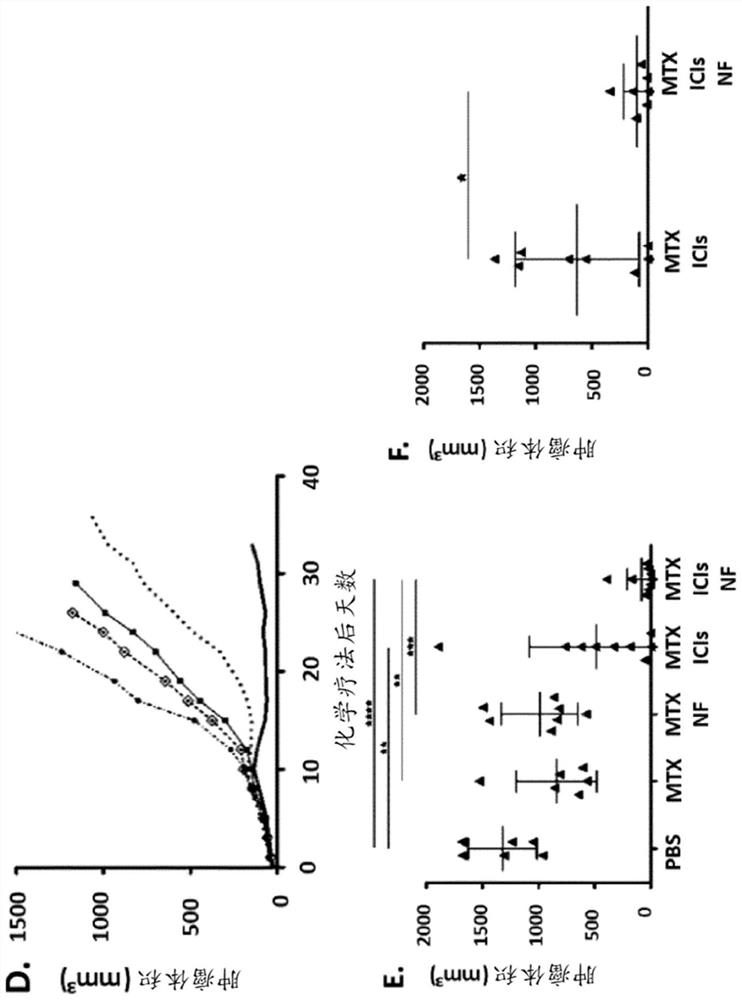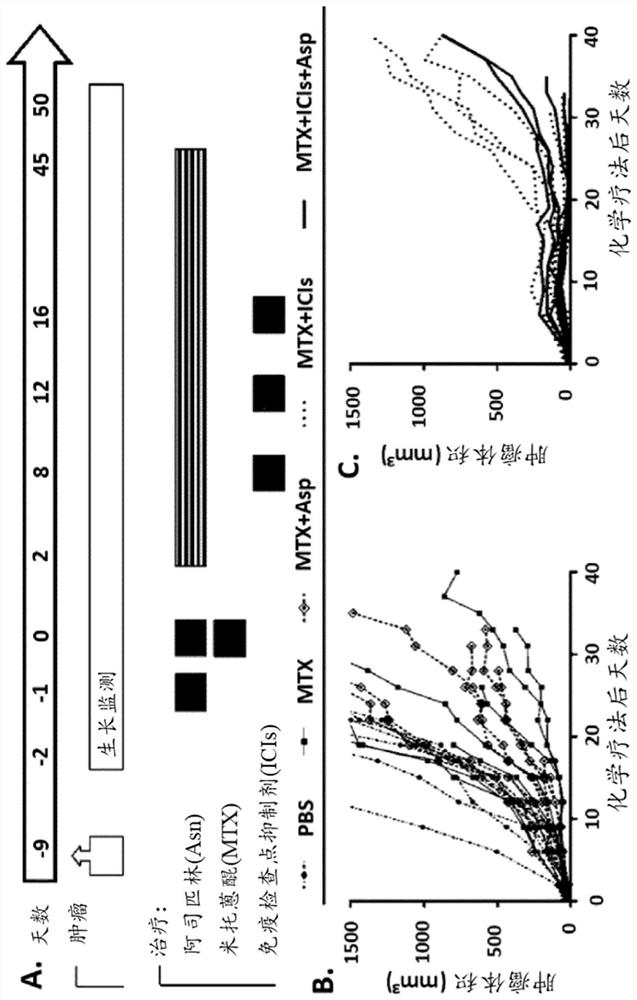Use of caloric restriction mimetics for potentiating chemo-immunotherapy for the treatment of cancers
A technology of caloric restriction and chemotherapy, applied in chemical instruments and methods, immunoglobulin, drug combination, etc., can solve problems that have not been studied in combination of chemotherapy and/or immunotherapy and calorie restriction simulants
- Summary
- Abstract
- Description
- Claims
- Application Information
AI Technical Summary
Problems solved by technology
Method used
Image
Examples
Embodiment 1
[0198] Immune checkpoint sensitization by a combination of chemotherapy and starvation. Burdens occur in subcutaneous locations with distinct syngeneic tumors (average 20mm 3 ) immunocompetent mice were first treated with systemic chemotherapy (mitoxantrone, MTX, intraperitoneal injection (i.p), or PBS as vehicle control) alone or in combination with a fasting regimen (48 hours, before chemotherapy) Treatment, followed by randomization, received either immunotherapy (antibodies that block CTLA-4 or PD-1) or isotype control antibodies, as schematically shown in Figure 1A. Tumor growth was monitored continuously. The combination therapy that most frequently produced tumor-free mice at the endpoint of the experiment (defined as 50 days after day 0 of the chemotherapy day) consisted primarily of the combined utilization of starvation, chemotherapy and immunotherapy. No or very few complete responses leading to tumor eradication were seen in any of the other groups (PBS control, ...
Embodiment 2
[0203] CD11b blockade interferes with the anticancer effects of hydroxycitrate-conjugated chemotherapy. The combination of the progesterone analog medroxyprogesterone and repetitive DNA lesions produced by gavage of 2,4-dimethoxybenzaldehyde (DMBA) is effective in inducing breast cancer when administered to young female BALB / c mice Very effective (data not shown). In this model, the combination of mitoxantrone (MTX)-based chemotherapy with CRM hydroxycitrate (HC) was highly effective in reducing tumor growth and prolonging mouse survival (data not shown), far more than either alone MTX and HC are more effective 26 . These results were obtained in a "realistic" setting, where cancers can be diagnosed by palpation and thus reach 25mm 2 of the surface, the treatment begins. Notably, repeated injections of a monoclonal antibody (M1 / 70) that blocked CD11b-dependent extravasation of myeloid cells 15 Significantly interfered with the reduction in tumor growth by HC+MTX (data not...
Embodiment 3
[0211] As detailed below, further in vivo experiments are ongoing.
[0212]In vivo experiments. Tumor implantation was performed by subcutaneous / orthotopic injection of XMCA205 / MC38 / PC3 / TC1 tumor cells (in 100 [mu]l PBS) in the right abdomen / orthotopic location of the mice. Tumor volumes were monitored using digital calipers and calculated according to the following formula: volume = length x width x height / 8 x 4 / 3 pi or by appropriate imaging modality (CT scan, PET scan, fluorescence imaging). When the tumor reaches an average of 20mm 3 , mice were fasted (no food for 48 hours, but had free access to water) or were given a caloric restriction mimic (CRM), such as hydroxycitrate (HC; 5 mg / ml per day, in drinking water), or treated with Treat with mitoxantrone (MTX; 5.17 mg / kg ip in 200 μl PBS), oxaliplatin, carboplatin + pemetrexed, oxaliplatin + 5FU, or paclitaxel / Nab-paclitaxel, or with immunological tests Point Inhibitor (ICI) anti-PD-1 (10 mg / kg ip in 200 μl PBS) and / or...
PUM
 Login to View More
Login to View More Abstract
Description
Claims
Application Information
 Login to View More
Login to View More - R&D
- Intellectual Property
- Life Sciences
- Materials
- Tech Scout
- Unparalleled Data Quality
- Higher Quality Content
- 60% Fewer Hallucinations
Browse by: Latest US Patents, China's latest patents, Technical Efficacy Thesaurus, Application Domain, Technology Topic, Popular Technical Reports.
© 2025 PatSnap. All rights reserved.Legal|Privacy policy|Modern Slavery Act Transparency Statement|Sitemap|About US| Contact US: help@patsnap.com



